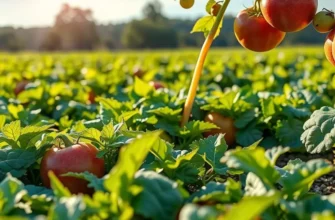Properly cooling large batches of food is vital for maintaining safety and quality at home. Understanding how to handle this process not only minimizes waste but also improves food management. This guide offers practical tips that will empower you to keep your meals safe, fresh, and delicious.
The Importance of Proper Cooling

Cooling food correctly is crucial for preserving both safety and quality. When food is not cooled appropriately, it creates an environment conducive to the growth of harmful bacteria. Such bacteria, including Salmonella and E. coli, can multiply rapidly at temperatures between 40°F (4°C) and 140°F (60°C), a range commonly known as the “danger zone.” If food spends too much time in this zone, the risks of foodborne illnesses significantly increase.
Beyond health implications, improper cooling can degrade the quality of food. Poor cooling can alter the texture, taste, and nutritional value of dishes. For instance, prolonged exposure to warm temperatures can cause certain ingredients to lose their structural integrity, resulting in soggy textures or off-flavors. This not only diminishes the culinary experience but also leads to increased food waste, as dishes may end up being discarded due to compromised quality.
Adhering to safety guidelines is vital for both large-scale kitchens and home cooks. The guidelines recommend that hot food should be cooled from 140°F (60°C) to 70°F (21°C) within two hours and then from 70°F (21°C) to 40°F (4°C) or below within another four hours. Achieving these temperature reductions can prevent bacterial growth effectively. It’s for this reason that breaking down large quantities of food into smaller portions is often suggested. Smaller portions have increased surface areas, aiding heat dissipation.
The benefits of proper cooling extend to efficiency and sustainability. By minimizing the risk of spoilage, you not only protect consumers but also contribute to the reduction of food waste. Efficient cooling practices are a cornerstone of sustainable kitchen operations, aligning well with low-waste cooking principles. For more on strategies to minimize waste during cooking and food prep, you can explore this guide on eco-smart kitchen practices.
In summary, understanding and implementing proper cooling techniques are essential for ensuring food safety and maintaining quality. This vigilance helps prevent foodborne illnesses while also supporting sustainability efforts by reducing unnecessary waste. Mastery of these techniques is a valuable skill for anyone involved in food preparation, from professionals to home enthusiasts, ensuring both the health and satisfaction of those served.
Practical Cooling Techniques for Large Batches

When handling large batches of food, safe cooling is paramount to preventing bacterial growth. Implementing effective cooling techniques can reduce the risk of foodborne illnesses and help maintain food quality. Let’s explore some practical methods for efficiently cooling large batches of food.
Cooling large quantities of food demands appropriate tools and strategies. Cooling wands are a fantastic option that can be completely filled with ice, submerged in soups or sauces, and help bring down the temperature rapidly. Simply stirring dishes with a cooling wand will reduce their heat swiftly, minimizing bacterial growth risks.
Another essential tool is the ice bath technique. This method works well for containers that can be submerged in ice water. Simply fill a basin with equal parts ice and water, then place the container into the bath. Stir continuously for even cooling. The ice bath method is highly effective for items like stocks or stews.
Moreover, using shallow containers can considerably enhance cooling speed. Dividing the large batch into smaller, shallow trays or containers increases the surface area, helping to dissipate heat more quickly. A depth of about two inches is ideal for achieving uniform and rapid cooling.
Furthermore, focusing on the location where food is stored also plays a crucial role in safe cooling practices. Placing containers in the fridge without overcrowding allows cold air to circulate effectively. When cooled foods need to be placed in a freezer, ensure a gap between each container to allow airflow and quicker freezing.
It’s also essential to monitor and document temperatures. Using a food thermometer to check if the cooling process is keeping temperatures below the danger zone (40°F or 4°C) is vital. Rapid cooling is important as perishable foods must be reduced from 135°F (57°C) to 70°F (21°C) within the first two hours, and then to below 40°F within four additional hours.
In several cases, implementing eco-friendly practices in the kitchen can coincide with effective cooling strategies. Notably, enhancing storage practices contributes to sustainable cooking. For more tips on eco-smart kitchen storage, visit our eco-smart kitchen storage guide.
To sum up, the practice of ensuring food safety through effective cooling and storage is a critical kitchen skill. Utilizing the right techniques and maintaining best practices can significantly reduce waste and ensure food quality while upholding food safety standards. By following the above methods, you can master the art of safely cooling large food batches.
Final words
Cooling large batches of food safely is a crucial skill that promotes food safety and quality. Proper techniques not only protect against foodborne illnesses but also help in making the most of your culinary efforts, reducing waste significantly. By following the best practices outlined in this guide, you can streamline your food storage processes while ensuring that every meal remains delicious and safe for consumption. With knowledge and proper techniques at your fingertips, you’re well-equipped to manage food with confidence.







